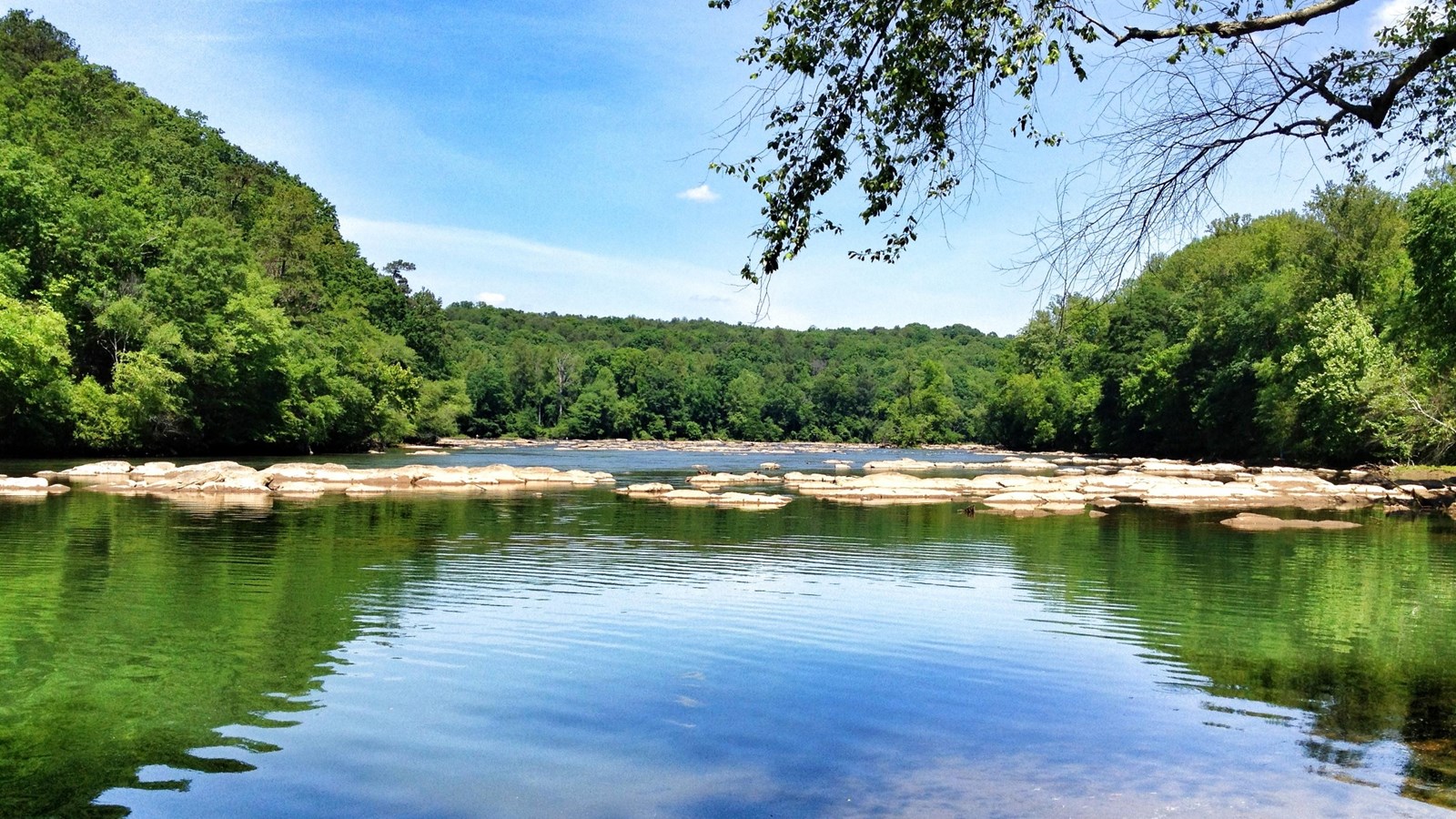Last updated: July 23, 2021
Place
Apalachicola Fort (Alabama)

Photo by Keizers, CC BY-SA 3.0, https://commons.wikimedia.org/w/index.php?curid=19270187
In the late 17th century, Spain struggled to hold Florida’s inland borders as the British North American empire pressed farther south and the two imperial powers competed for alliances with indigenous nations. At the height of its power in Florida, Spain’s Catholic missions stretched from the Atlantic Ocean to the Gulf of Mexico, but British colonists in South Carolina and the neighboring Lower Creek Indians threatened Spanish dominance. To defend their settlements in the northern Florida region, Spanish soldiers and Catholic missionaries founded the empire’s northernmost outpost on the Chattahoochee River. Named Apalachicola Fort, this outpost in present-day southeastern Alabama is an important archeological site and a National Historic Landmark.
The fort site sits above the banks of the Chattahoochee River, which is the natural border between Alabama and Georgia. Spain chose this site because it was close to the Lower Creek town of Apalachicola, an important trade center in the region. Throughout the Spanish colonial period, Spain depended on the Catholic mission system to impose authority over its colonial settlements and American Indians. Apalachicola Fort was a small outpost, on the edge of the Spanish frontier. Approximately 20 Spanish soldiers supported only a few missionaries. Between 1689 and 1691, the Catholic friars at Apalachicola Fort tried to convert the nearby Lower Creek Indians to Catholicism and to create trade ties with them. The Spanish believed these ties could strengthen their relationship with the Lower Creek Indians, who were already trading with the British. Despite the Spaniards’ efforts, the Lower Creek and their British allies began to raid Spanish settlements, and the colonists at Apalachicola chose to abandon their post.
Having not built the fort strong enough to withstand a heavy assault, the Spanish destroyed the fort in 1691 rather than trying to hold it against an attack. Apalachicola Fort’s rectangular blockhouse, which was about 61 by 53 feet and had four bastions, was of wattle and daub. This ancient building technique uses woven branches, or wattle, to create a frame that then gets a plaster of daub, made from mixtures of mud, clay, or animal dung. The Spanish brought this technique with them from Europe to Florida and often used it for dwellings, because it created a cooler space than wooden buildings. A clay half-wall, about four feet high, surrounded the blockhouse and an 11-foot-wide moat surrounded the entire fort site.
The site of Apalachicola Fort was lost for centuries after the Spanish abandoned it. In 1956, local historian Mark Fretwell and Brother Finbar of Holy Trinity used documentary evidence to identify the location of the fort’s ruins on a private farm. The area is heavily wooded and grown over, but beneath the brush, the sunken outline of the fort ruins is visible. Several years after the scholars identified the site, archeologists from the Smithsonian Institution and the University of Alabama partnered to excavate Apalachicola Fort. They found evidence of the Spanish structures and blockhouse beneath the topsoil. They also discovered pieces of Majolica, a popular type of glazed ceramic pottery, and olive jar fragments the experts determined were made during the late 17th century. In 1964, just eight years after discovery, Apalachicola Fort became a National Historic Landmark. The Russell County Historic Commission purchased the fort for $1 in 1971 and archeological excavations are ongoing at the site.
